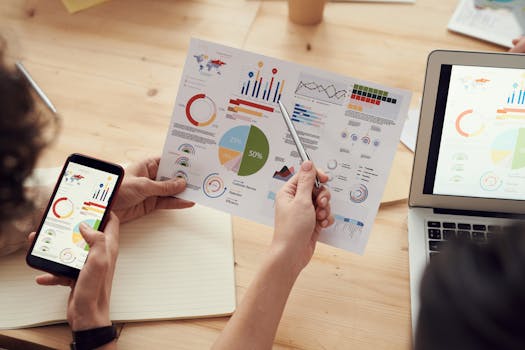IoT and Project Management: A New Frontier
The Internet of Things (IoT) has transformed the way we interact with the world around us. As an integral part of everyday life, it brings efficiency, connectivity, and data-driven decision-making to various domains. For project managers, integrating IoT into their workflows opens a new frontier of opportunities. The synergy between IoT and project management allows for enhanced tracking of processes, risk mitigation, and more informed strategic planning.
In this article, we will explore effective strategies to leverage IoT in project management. We will cover theoretical aspects and present practical examples of applying IoT technologies to improve project outcomes. By the end of this article, you'll be equipped with the knowledge and tools necessary to embrace IoT and lead successful projects in the digital age.

📊 Key Concepts
In our journey, understanding the intersection of IoT and Project Management is crucial. Here's a look at some key concepts that form the foundation of this synergy:
🤖 What is IoT?
Internet of Things (IoT) refers to the network of physical devices, vehicles, appliances, and other objects embedded with sensors, software, and connectivity capabilities. This allows these objects to collect and exchange data, creating a seamless flow of information that can be used to improve operations, enhance user experiences, and provide real-time insights.
📊 Causes for Adoption in Project Management
The reasons for integrating IoT with project management are compelling:
- Real-Time Data Collection: IoT devices provide continuous, real-time data that enables project managers to make quick decisions.
- Enhanced Collaboration: IoT facilitates better communication among teams and stakeholders, ensuring everyone is on the same page.
- Increased Efficiency: By automating routine tasks with IoT solutions, teams can focus on strategic initiatives and innovation.
🔄 IoT and Data Analytics
Data is the heartbeat of IoT. The influx of information collected from devices can be analyzed to predict trends, identify bottlenecks, and optimize performance. Project managers can utilize this data analytics to improve decision-making and resource allocation throughout the project lifecycle.
🏗️ Agile Project Management
Integrating IoT promotes an agile approach to project management. Agile methodologies focus on adaptability, collaboration, and incremental delivery. With IoT, project managers can pivot quickly based on real-time data and stakeholder feedback, ensuring project goals align with evolving business needs.
🎯 How to Apply
Putting theory into practice is where the real transformation occurs! Here are practical steps and real-life examples to apply IoT strategies in project management:
📌 Step 1: Identify Project Needs
Identify specific areas where IoT can add value:
- Monitor Resource Usage: Use sensors to track consumption of materials or electricity.
- Track Project Progress: Implement IoT devices that report on the status of project components in real-time.
🗂️ Step 2: Select the Right IoT Solutions
Choose suitable IoT technologies that align with your project objectives. Here’s how:
- Asset Tracking: For a construction project, utilize GPS-enabled sensors to track equipment.
- Environmental Monitoring: In environmental projects, use IoT devices to monitor air quality or temperature.
🔄 Step 3: Integrate IoT with Project Management Tools
Incorporate IoT data into your project management software. Tools like Trello, Asana, or Microsoft Project can provide integration features for IoT data visualization.
- Example: A manufacturing project can integrate IoT sensors in production lines to send status updates directly to your project management tool, helping you monitor progress and issues dynamically.
📈 Step 4: Monitoring and Controlling
Utilize IoT for ongoing monitoring:
- Regularly analyze data from IoT devices to detect trends.
- Example: In a Smart City project, cities are using IoT sensors to monitor traffic patterns and adjust signal timings for optimal flow.
🎉 Step 5: Review and Adapt
Evaluate the project outcomes using insights gained from IoT data.
- Feedback Loops: Use retrospective meetings to discuss how IoT insights influenced decision-making and project results.
Manage projects with Workfeed
Workfeed is the project management platform that helps small teams move faster and make more progress than they ever thought possible.
Get Started - It's FREE* No credit card required
🛠️ Frequently Asked Questions
Here are some frequently asked questions about "IoT and Project Management: A New Frontier".
🎉 Conclusion
The integration of IoT with project management represents a significant opportunity for project leaders to enhance their effectiveness. By leveraging real-time data, improving collaboration, and fostering agile methodologies, teams can navigate complex projects with greater ease and precision.
As we stand on the brink of this new frontier, embracing IoT not only positions project managers to achieve better results but also transforms how they approach planning and executing projects. By applying the strategies discussed, any project manager can harness the power of IoT and lead their teams into a new era of project management. 🚀